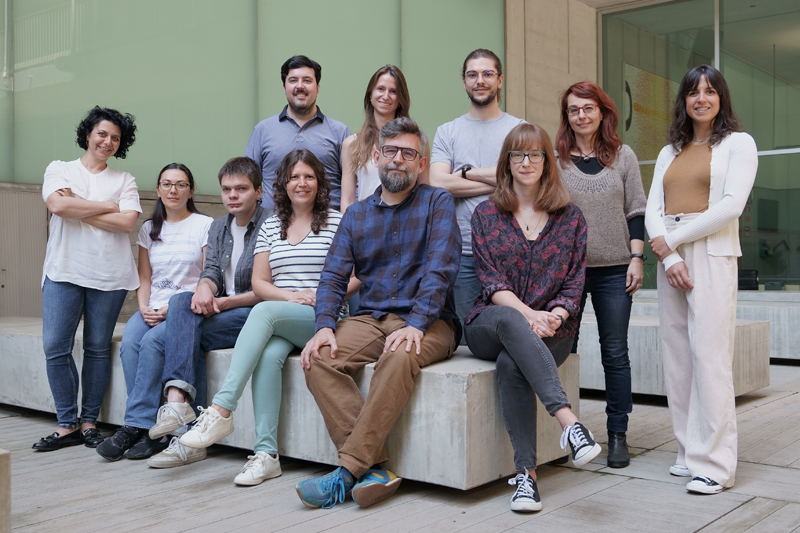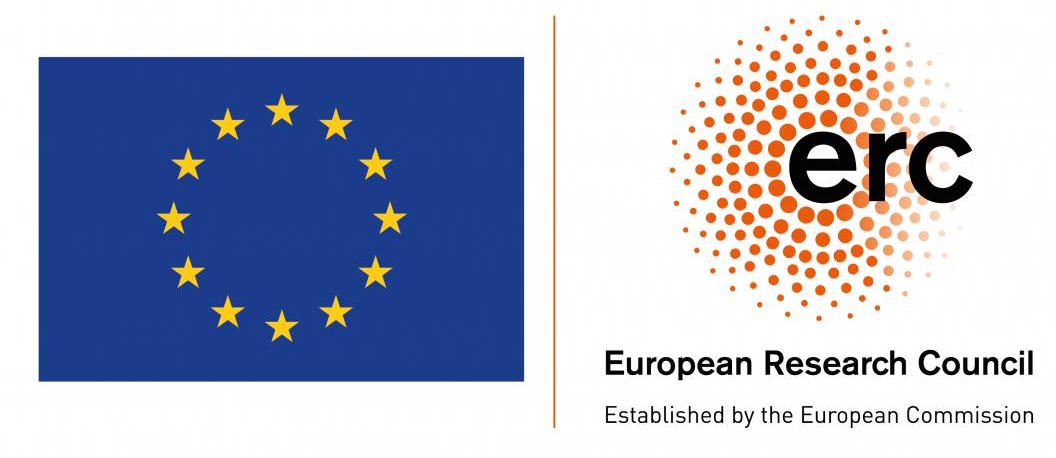 Marti-Renom Lab
Marti-Renom Lab
 Genome Biology
Genome Biology
- Group page
- Research lines
- Group members
- Publications
1999 PhD Institut de Biologia Fonamental, Universitat Autònoma de Barcelona (Spain)
1999-2003 Postdoctoral work at the Rockefeller University, New York (NY, USA).
2003-2006 Assistant Adjunct Professor, UCSF, San Francisco (CA, USA)
2006-2011 Group Leader at the CIPF, Valencia (Spain)
2012-today Group Leader at the CNAG-CRG, Barcelona (Spain)
2012-today Affiliated Group Leader to the CRG, Barcelona (Spain)
2013-today ICREA Research Professor
Our group web site: http://www.marciuslab.org
News
Fossils of ancient chromosomes discovered (11/07/2024)
A team led by scientists from Baylor College of Medicine, University of Copenhagen, and Centre Nacional d’Anàlisi Genòmica and Centre for Genomic Regulation report discovering fossils of ancient chromosomes in the remains of a woolly mammoth that died 52,000 years ago.
CNAG-CRG joins forces with US institutions to set up new genome imaging centre at Harvard (31/08/2021)
The Centro Nacional de Análisis Genómico (CNAG-CRG), part of the Centre for Genomic Regulation (CRG) in Barcelona, will be part of the Center for Genome Imaging, a new infrastructure based at Harvard University that will develop technologies that enable the imaging, analysis and modeling of the entire human genome in 3D and at extremely high resolution.
Researchers to map poultry and swine microbiomes to improve animal production (18/06/2021)
Marti-Renom's lab will be responsible of integrating the multi-omics data obtained by the consortium partners to build 3D models of the animal-microbiota interactions.
Two new research projects to tackle Covid-19 funded by Fundació La Marató (12/06/2021)
Marc A. Martí Renom, ICREA Research Professor at CNAG-CRG, will lead efforts to identify the genetic determinants that underlie the variation in severity for people with Covid-19.
Researchers chart a three-dimensional genomic map of healthy and cancerous lymphocytes (18/02/2021)
The team have developed a new way to map the three dimensional structure of the human genome, revealing hundreds of alterations in leukaemias and lymphomas.
New tool helps to ‘spot the difference’ in genome organisation (20/10/2020)
An international team has developed an algorithm which compares the DNA organisation data from a healthy individual with that of a cancer patient
PerMedCoE: Exascale-ready cell-level simulations for European Personalised Medicine (08/10/2020)
The CRG is partner of this new EU-funded project, coordinated by the Barcelona Supercomputing Center (BSC-CNS)
Improving European healthcare through cell-based interceptive medicine (07/09/2020)
Hundreds of innovators, research pioneers, clinicians, industry leaders and policy makers from all around Europe are united by a vision of how to revolutionize healthcare.
New genome mapper is like “upgrading from dial-up to fibre-optic” (28/07/2020)
Researchers from Harvard university, the Centro Nacional de Análisis Genómico (CNAG) and the Centre for Genomic Regulation (CRG), describe the first technology able to visualize hundreds to potentially thousands of genes at the same time under the microscope.
Ready, set, action: new tools to film genome dynamics (29/05/2020)
Now, scientists at the CNAG-CRG and CRG have developed TADdyn, a tool that can generate movies of how genomes change over time. The findings have been recently published in Nature Communications.
Unravelling the three-dimensional genomic structure of male germ cells (10/07/2019)
A study led by scientists at the National Centre for Genomic Analysis (CNAG-CRG), the Centre for Genomic Regulation (CRG) and the Universitat Autònoma de Barcelona (UAB) reveals the three-dimensional genomic structure of male germ cells and how this structure determines their function
A new Art and Science collaboration at CRG in Barcelona: genome-inspired fashion design (01/04/2019)
The designer Carolin Vogler and scientists at the Centre for Genomic Regulation (CRG) have been awarded one of the STARTS Residencies, which support artistic residencies that bring original artistic contributions to technology-based projects.
LifeTime is delighted to receive EU funding (12/03/2019)
LifeTime is one of the six winners of an EU-wide competition in which ambitious and forward-looking research projects are selected and funded.
Europe looks to cells for a healthier future (16/01/2018)
Researchers at CNAG-CRG take part in the LifeTime consortium, which aims at understanding the constant changes within cells and their relationship to disease
Scientists call for unified standards in 3D genome and epigenetic data (30/10/2018)
Studying the three-dimensional structure of DNA and its dynamics is revealing a lot of information about gene expression, expanding our knowledge of how cells, tissues and organs actually work in health and disease [...]
When a chemical tag makes the difference in cell fate and gene expression (18/09/2018)
Scientists at the Centre for Genomic Regulation in Barcelona, Spain, have uncovered the role of special chemical ‘tags’ in controlling vital genes involved in early mammalian development, publishing their findings in the journal Nature Genetics on 17thSeptember.
Deciphering the role of cohesin in the 3D organisation of the genome allows for a better understanding of tumour cells (04/06/2018)
A study led by scientists from the Centro Nacional de Análisis Genómico of the Centre for Genomic Regulation (CNAG-CRG) and the Spanish National Cancer Research Centre (CNIO), deciphers the role of two variants of cohesin –a protein complex essential for cell viability– in the 3D organisation of the genome.
Genome architecture’s surprising role in cell fate decisions (15/01/2018)
New study led by researchers at the Centre for Genomic Regulation (CRG) in Barcelona, Spain, shows unexpected and crucial role of genome architecture in determining cell fate.
Overview
We are interested in the molecular mechanisms that regulate cell fate. To study such mechanisms, we employ the laws of physics and the rules of evolution to develop and apply computational methods for predicting the 3D structures of macromolecules and their complexes. Our current lines of research are:
Open Source drug discovery projects for tropical diseases
We develop methods for comparative docking of small chemical compounds and their target proteins. Such methods have already been applied to identify drug targets in ten genomes that cause tropical diseases. This work is part of the Tropical Disease Initiative and is funded by the Spanish Ministerio de Ciencia e Innovación.
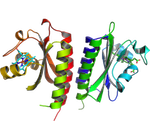
RNA structure prediction
The recent interest in RNA, specially non-coding RNA molecules, has prompted us to develop a series of tools for the alignment of RNA structures and the prediction of their functions. This work has been funded by a Marie Curie action and a Generalitat Valenciana research grant.
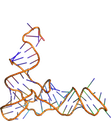
Structure determination of genomes
More recently, we have engaged collaboration with experimentalists to study the 3D organization of the chromatin. Such work is resulting in the first ever structures of genomic domains and entire genomes.
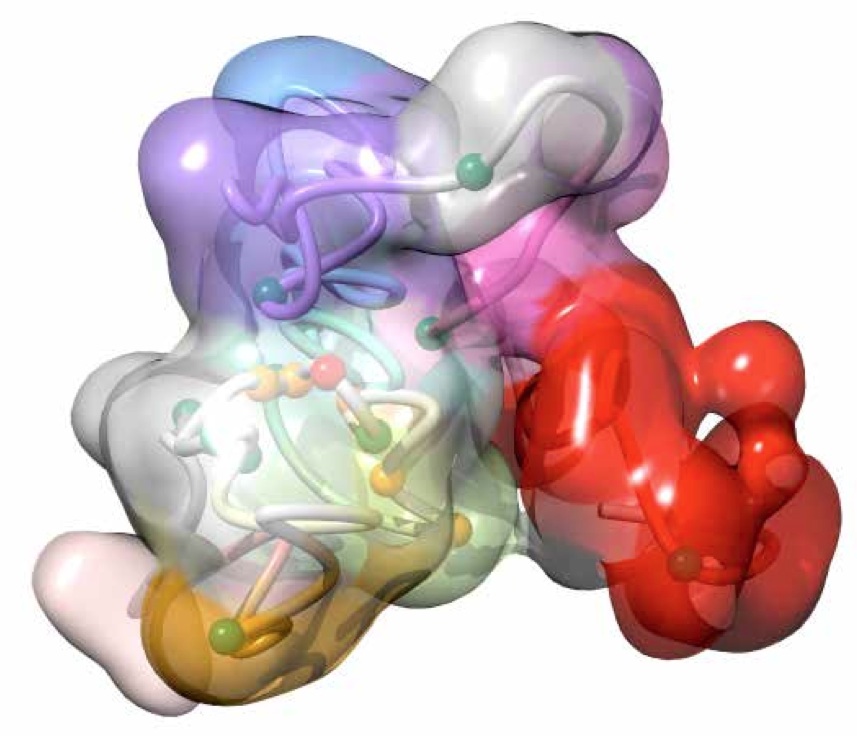
ERC Synergy Project - Dynamics of Genome Architecture in Stable and Transient Changes in Gene Expression
Chromosomes and genes are non-randomly positioned in the cell nucleus and the vision of a dynamic and complex organization of the nucleus is replacing the classical view of genomes as linear sequences. (+more info)
Funding Acknowledgements

“HPC Center of Excellence in Personalised Medicine - PerMedCoE’”: This project has received funding from the European Union’s Horizon 2020 research and innovation programme under grant agreement No 951773.
Our current lines of research are:
Open Source drug discovery projects for tropical diseases
We develop methods for comparative docking of small chemical compounds and their target proteins. Such methods have already been applied to identify drug targets in ten genomes that cause tropical diseases. This work is part of the Tropical Disease Initiative and is funded by the Spanish Ministerio de Ciencia e Innovación.
RNA structure prediction
The recent interest in RNA, specially non-coding RNA molecules, has prompted us to develop a series of tools for the alignment of RNA structures and the prediction of their functions. This work has been funded by a Marie Curie action and a Generalitat Valenciana research grant.
Structure determination of genomes
More recently, we have engaged collaboration with experimentalists to study the 3D organization of the chromatin. Such work is resulting in the first ever structures of genomic domains and entire genomes.
